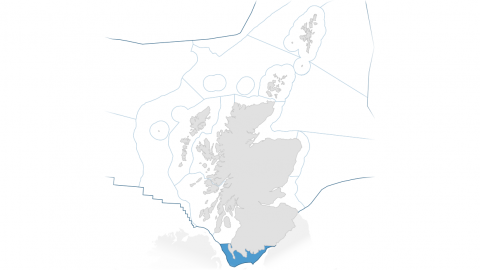The tables in this section reflect the output of the workshop (October 2019) when the pressures from human activities were assessed for the period 2014 to 2018 for the region. The summary text below the tables elaborates on some of the points that were made at the workshop.
This pressure assessment uses the FeAST classification which includes two abrasion pressures: surface abrasion & sub-surface abrasion. Some expert groups combined these as a single pressure "surface & sub-surface abrasion" whilst others focussed on using surface abrasion alone, hence there is a slight difference in handling for some regions.
The ranking of the pressures in terms of impact is a relative exercise within each region, and is not a statement of their absolute impact. Detailed comparison between regions on the basis of these relative pressure assessments is therefore not advisable.

Main pressures identified
| Priority [1] | Pressure (FeAST classification) [2] | Main healthy and biologically diverse components affected [3] | Main contributing FeAST activity /activities to pressure [4] | Associated productive assessments [5] |
|---|---|---|---|---|
| 1 | Removal of target species (including lethal) |
|
||
| 2 | Surface abrasion |
|
||
| 3 | Removal of non-target species (including lethal) |
|
||
| 4 | Sub-surface abrasion/penetration |
|
||
| 5 | Underwater noise |
|
Other pressures identified
Footnote: the ordering of entries is alphabetical and there is no prioritisation between the pressures.
Summary from workshop
The Solway region is more estuarine that other sea areas on the Scottish west coast, and the most heavily influenced by the Irish Sea, and the large surrounding conurbations. It is, though, a region of diversity, with sandy tidal flats to the east and deep tidally energetic water of the North Channel to the west.
In identifying the top five pressures for the Solway region the following activities were considered to be important.
1 Removal of target species (lethal): all species involved in recreational angling have been assumed to be ‘target’ species rather than ‘non-target’ bycatch. This activity is likely to be (mainly, though not exclusively) concentrated in inshore waters. Scallop dredging; creeling and potting; bottom otter trawling and pair trawls.
2 Surface abrasion: this is mainly linked to impacts associated with yachts and other vessels anchoring away from marinas etc., scallop dredging and bottom otter trawling and pair trawls. Although there is potentially also some highly localised risk from SCUBA diving.
3 Removal of non-target species: mainly linked to impacts of bottom otter trawling and pair trawls; recreational fishing; scallop dredging; intertidal fishing e.g. bait digging; creeling and potting.
4 Sub-surface abrasion: this is mainly linked to impacts associated with trawling, and yachts and other vessels anchoring away from marinas.
5 Underwater noise: mainly driven by small boat activity. Noise footprint expected to be relatively local (small engines create higher-frequency sounds which get attenuated quicker). Significant numbers of larger vessels movements do not occur in this region.

